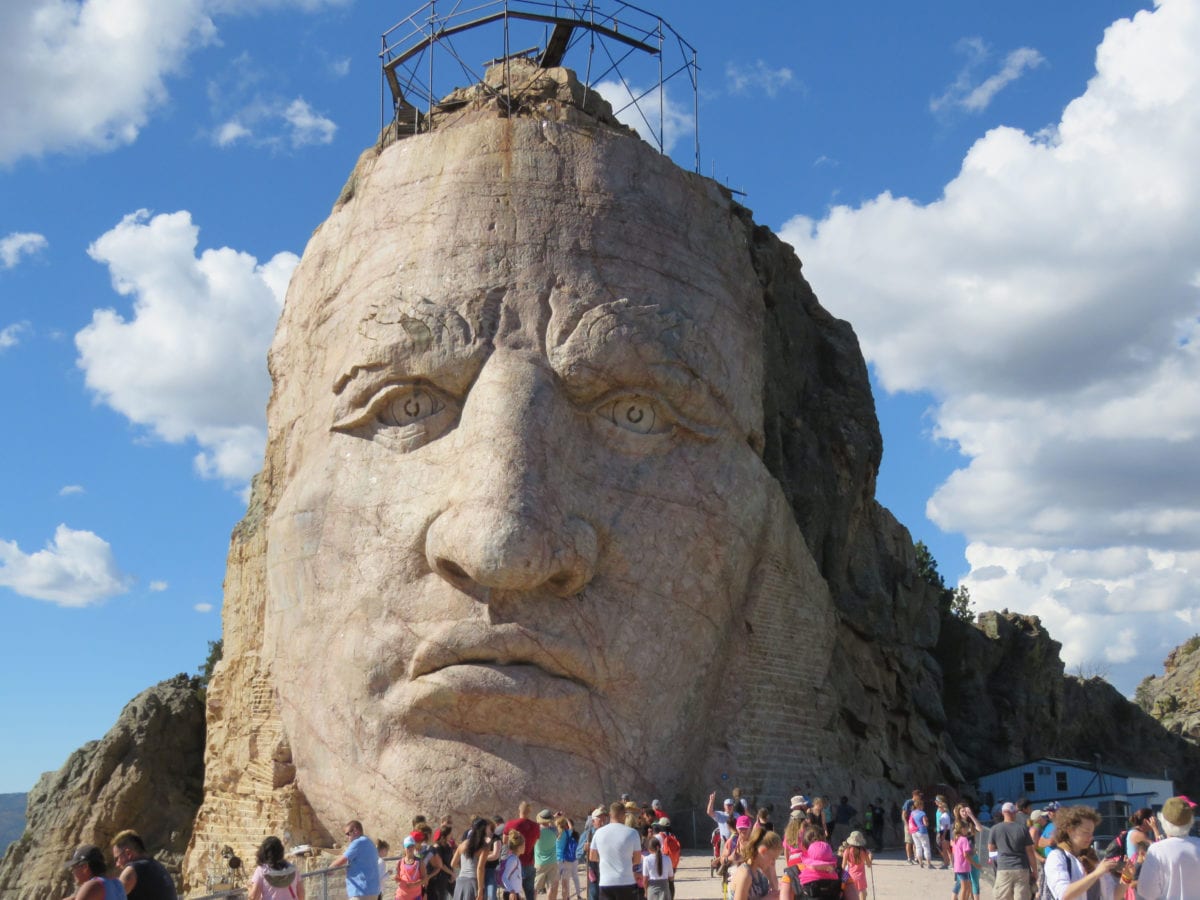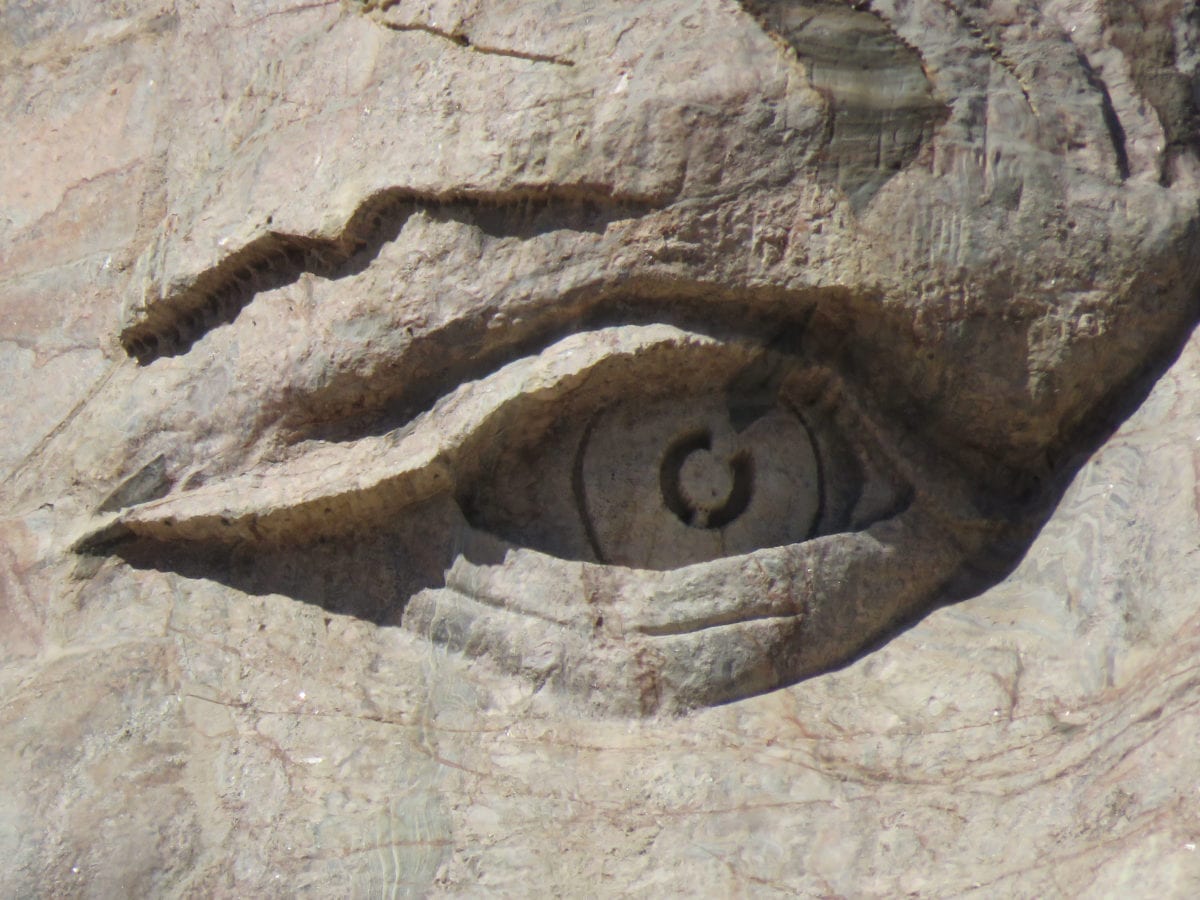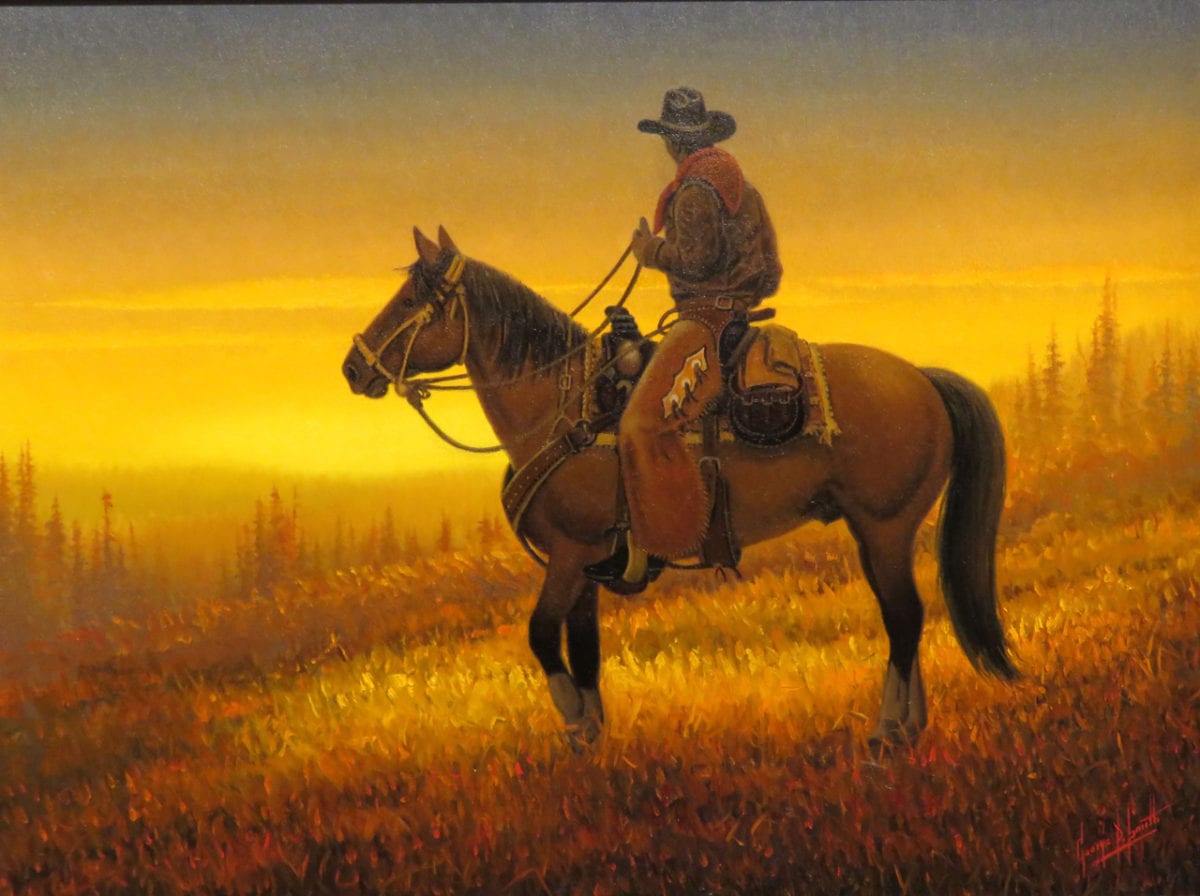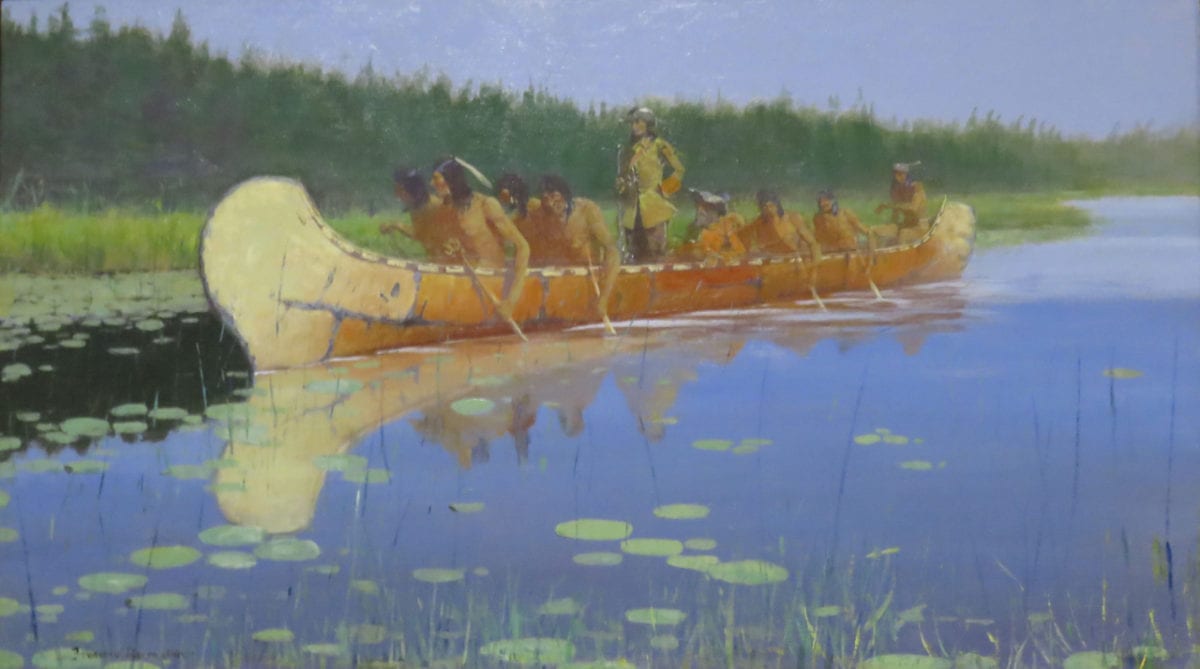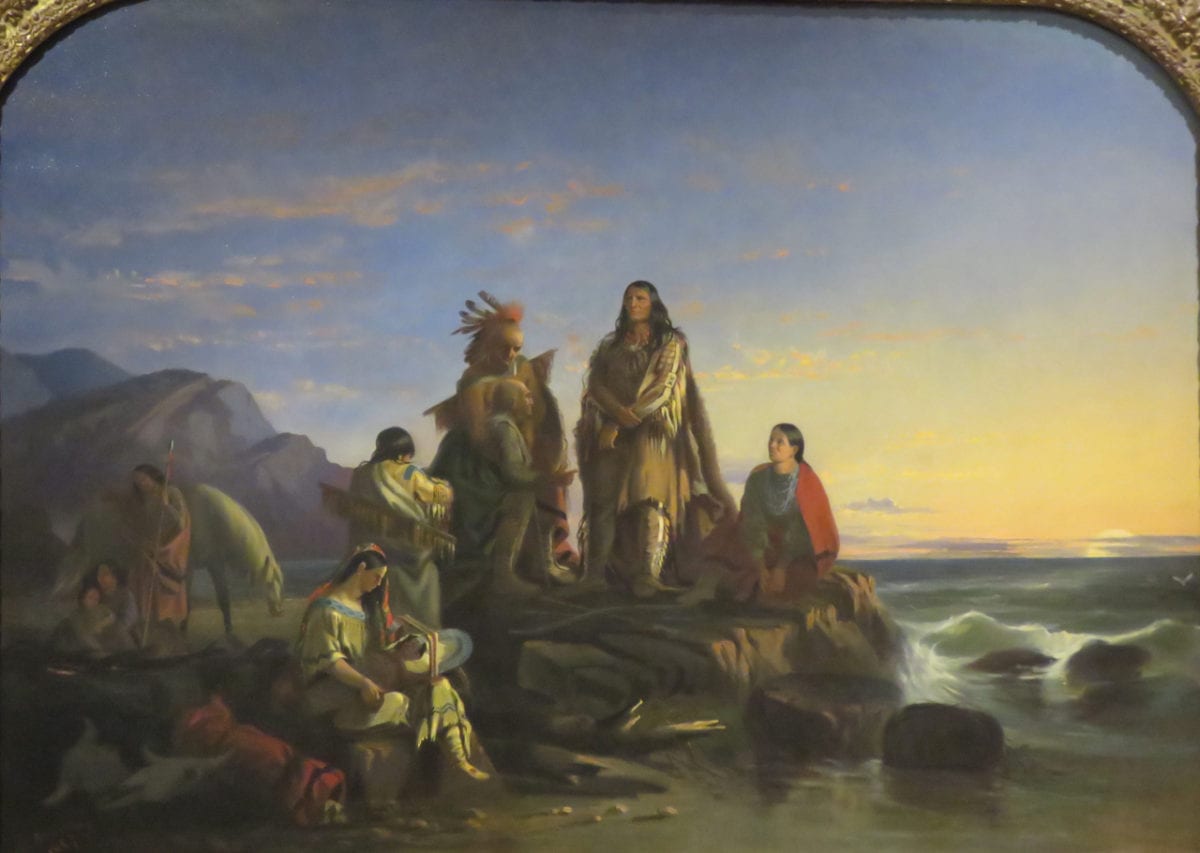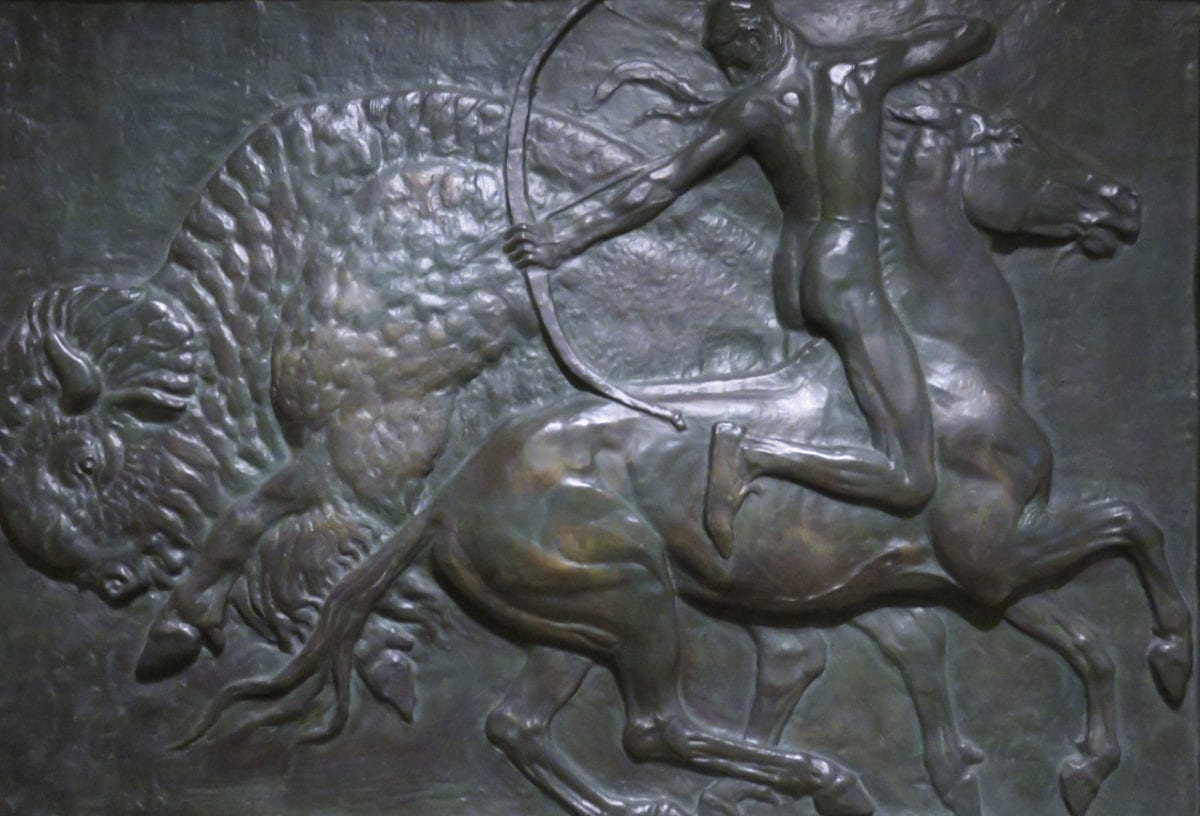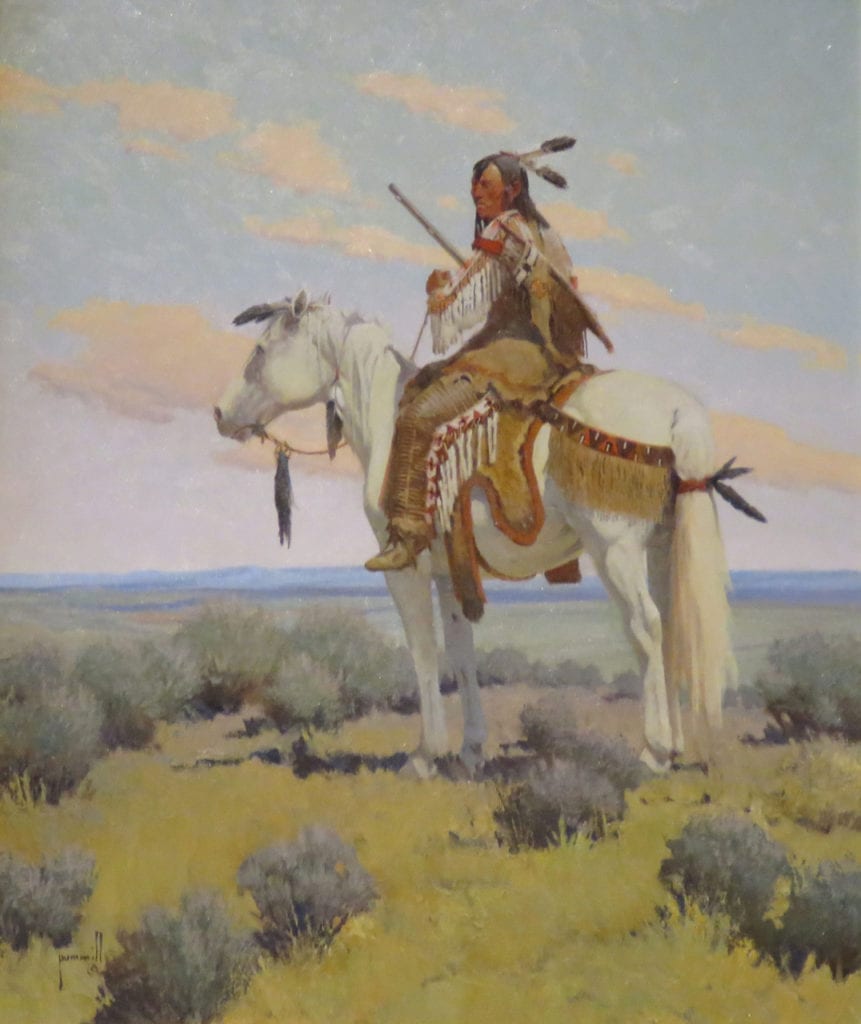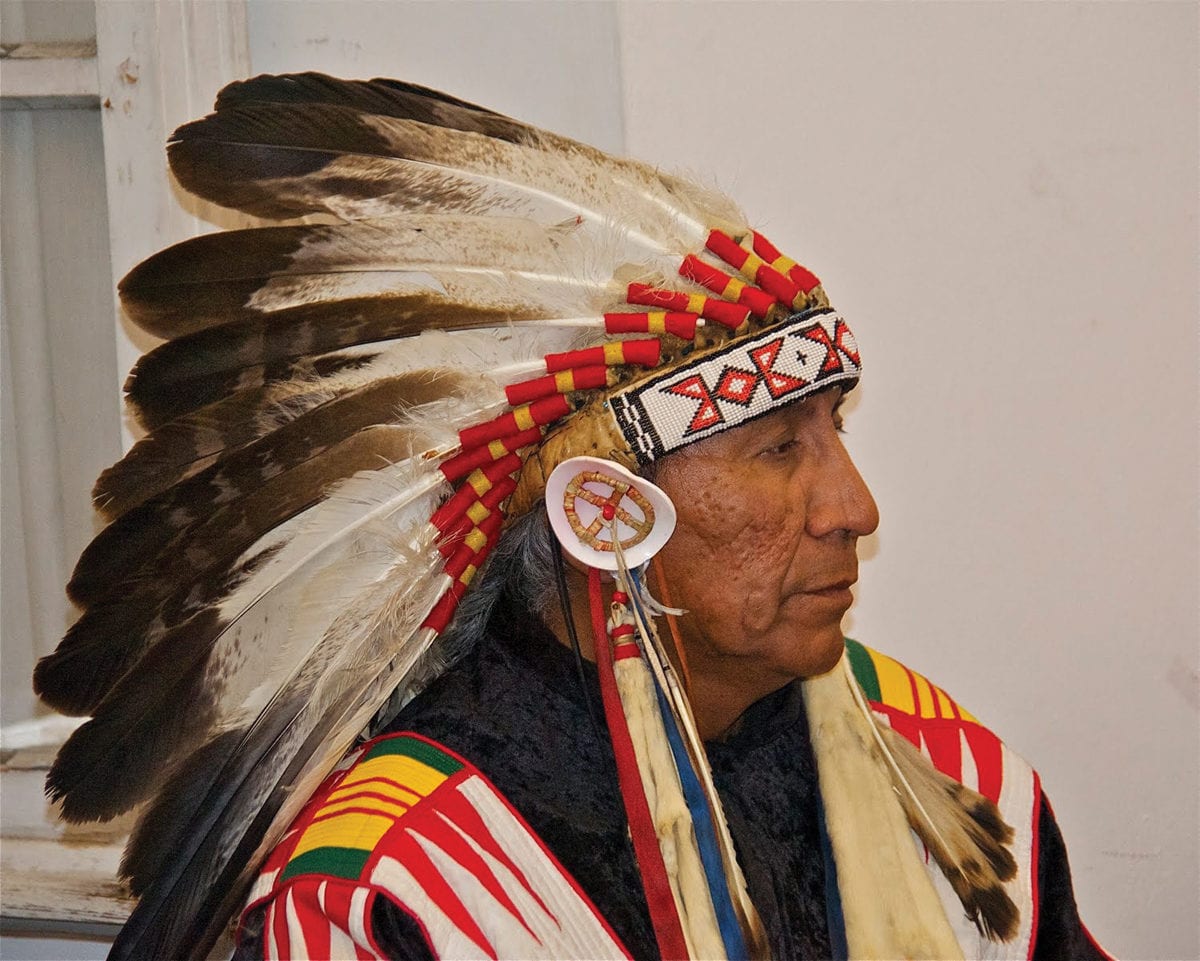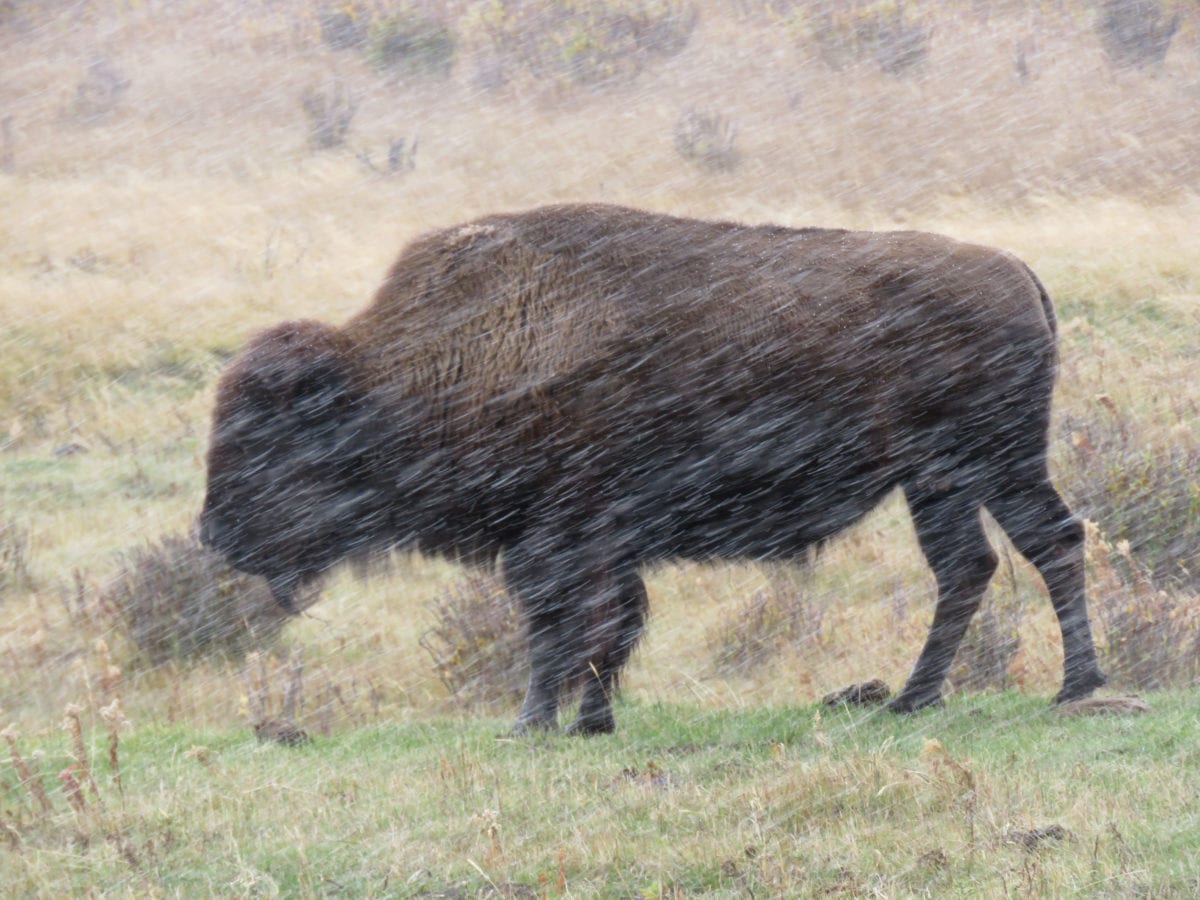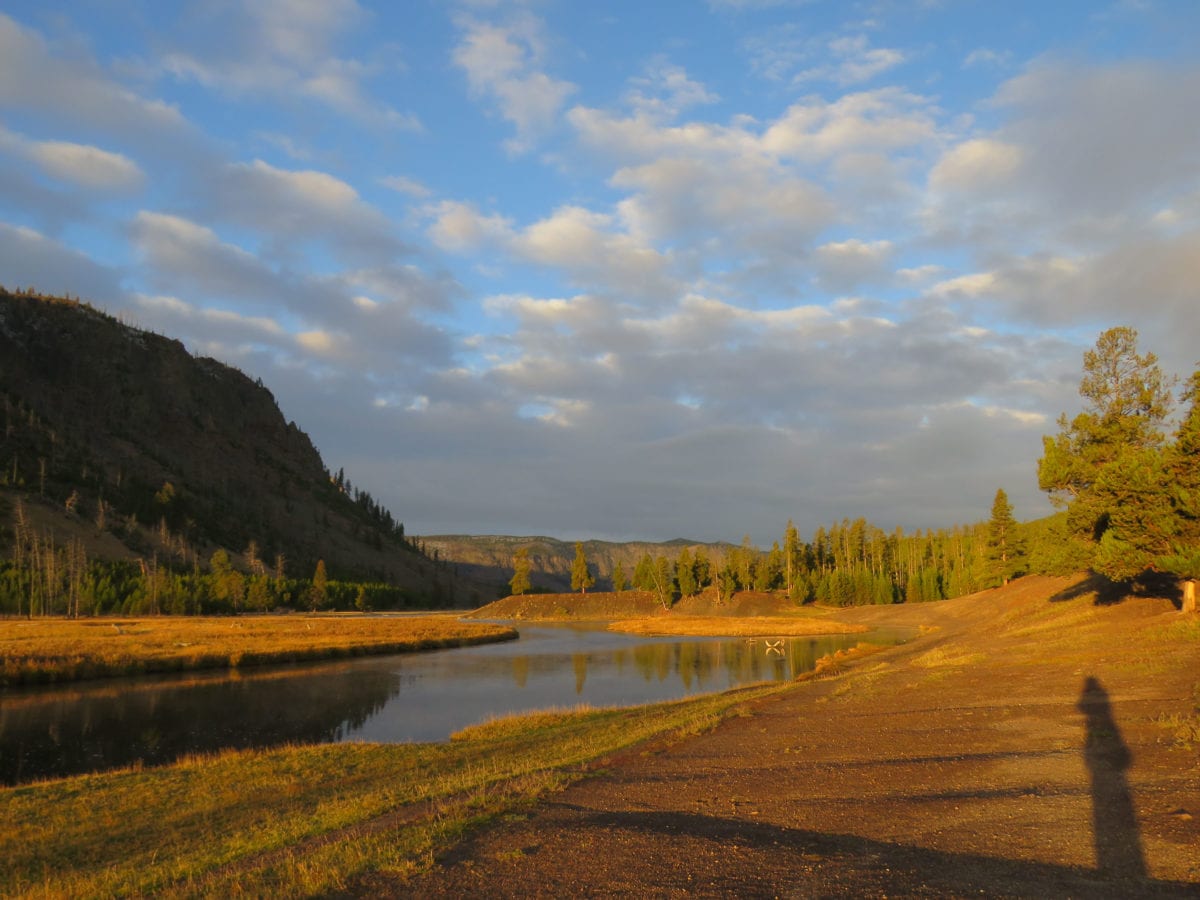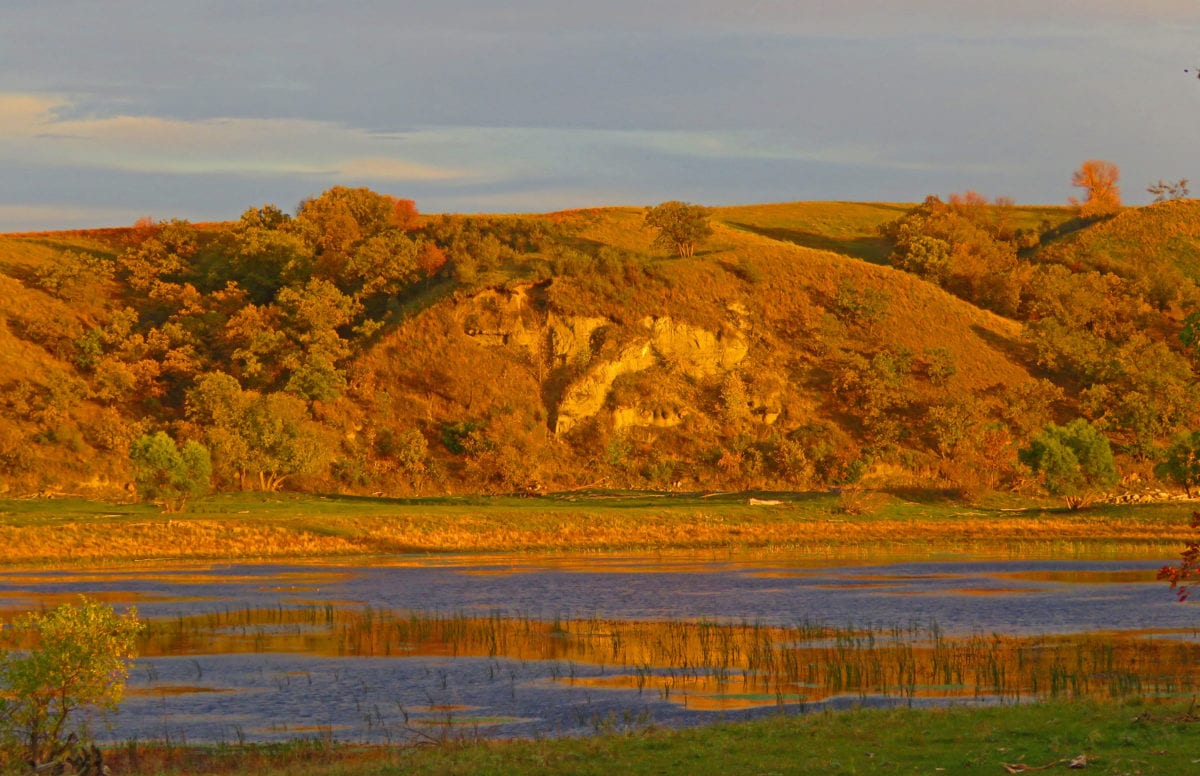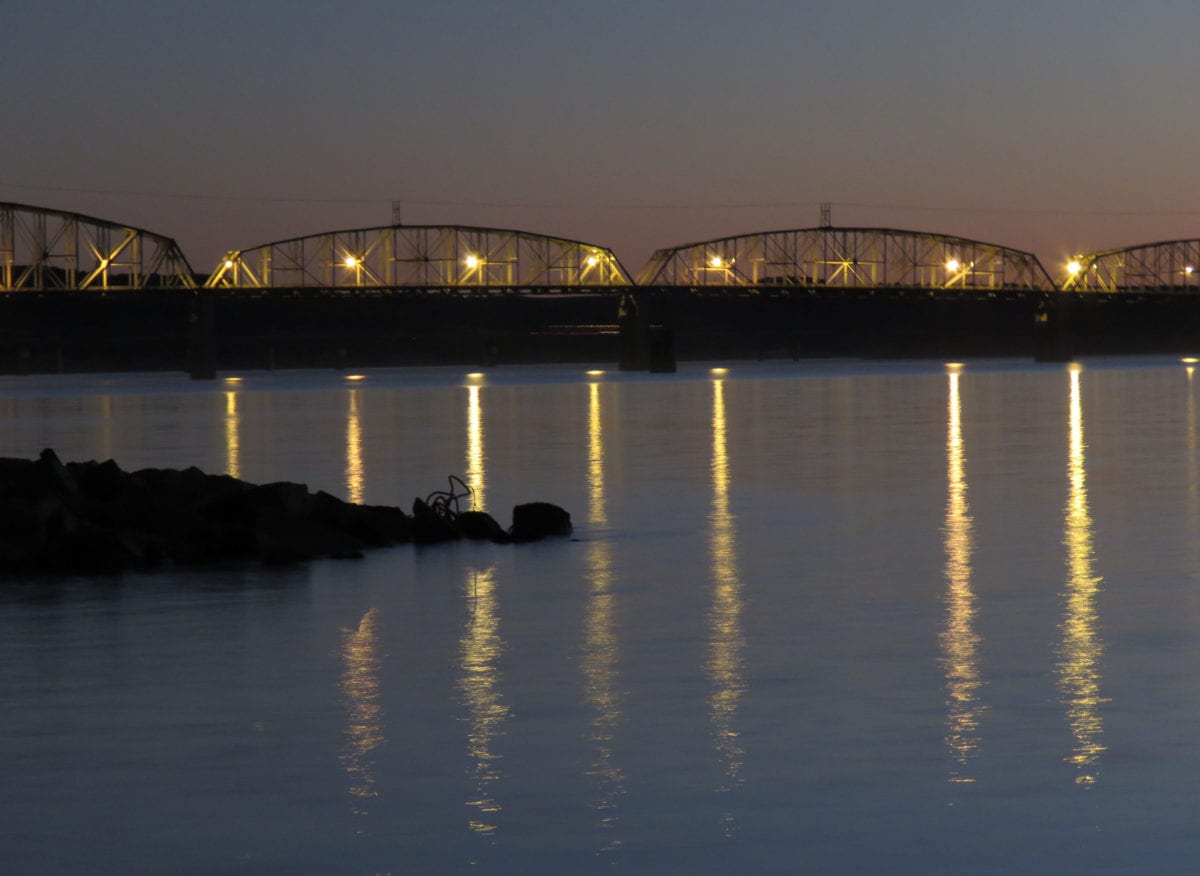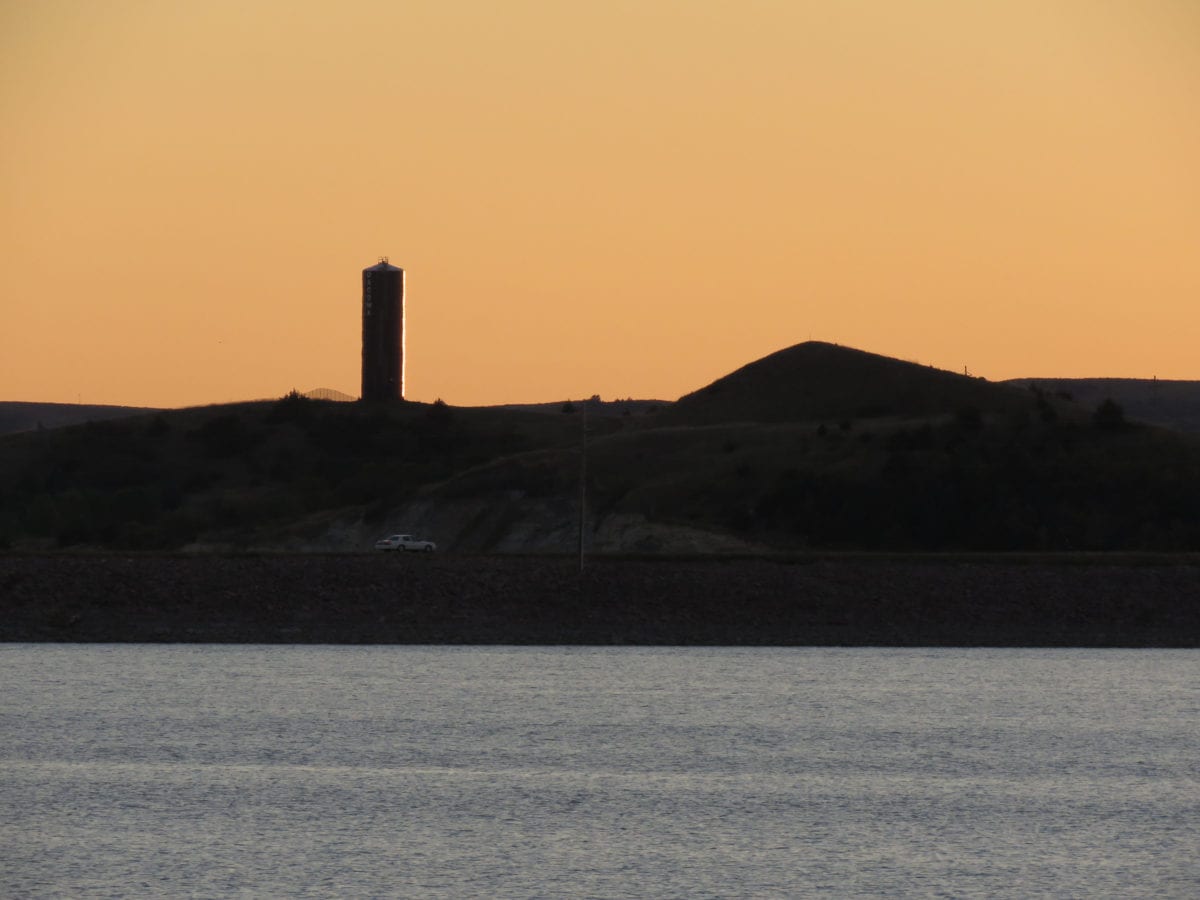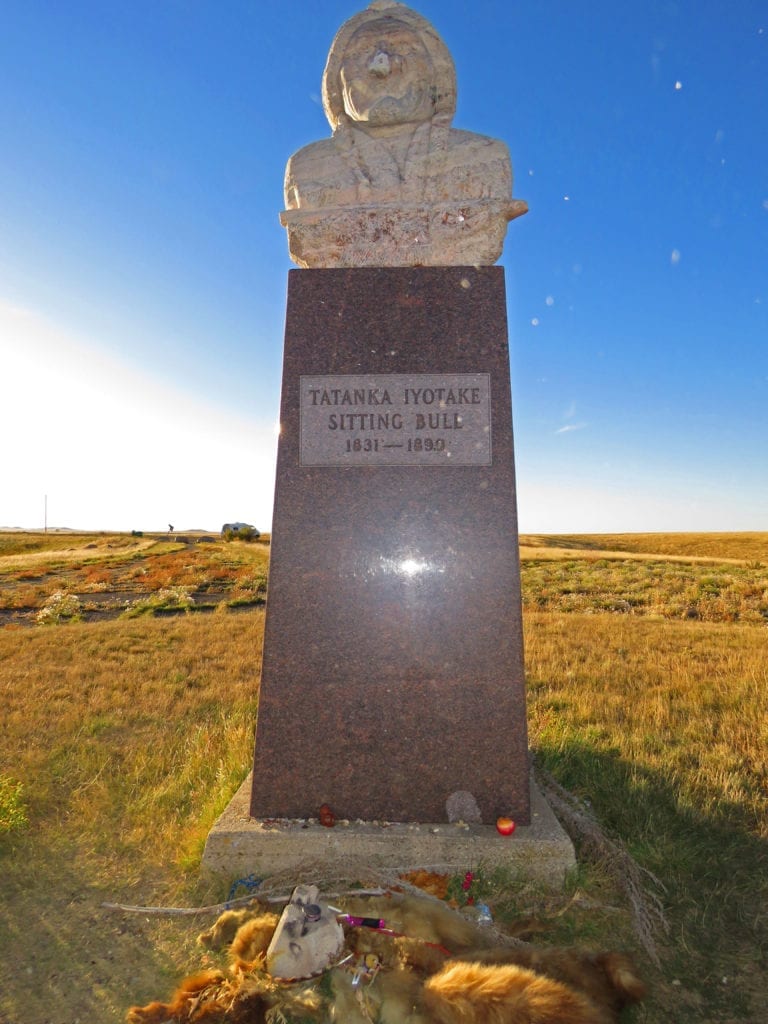The Western pioneer and cowboy myth is huge, but not so much from the Native American perspective.
By Glynn Wilson –
Editor-in-Chief –
EDITOR’S NOTE: There are two kinds of people in the world.
Which kind are you?
Do you like reading the pretty little patriotic myth?
Or would you rather see a real journalist take off on a rant revealing the unvarnished truth?
I must admit that I’ve long been a card carrying member of the later camp.
Once, in a moment of clarity down in New Orleans, I wrote the real story of a famous “meteorite†that inhabited Audubon Golf Course. It was really a chunk of iron ore from Birmingham’s Red Mountain, dropped there by a fool public relations man, and sat there too heavy to move after the World’s Industrial and Cotton Centennial Exposition ended in 1885: A Matter of Course.
After it was published, I was playing golf at Audubon one day with the famous Alabama writer Rick Bragg, and he made an off hand comment about the story that was not necessarily a compliment.
“I kind of like the meteorite story better,†he said.
I know. It’s a better story if George Washington really did chop down that famous cherry tree and admit it to his father, proving he was an honest man, even though it has no basis in historical fact. That too was made up by a writer who wanted to sell books and present Washington as the perfect role model, especially for kids: Cherry Tree Myth.
Perhaps it’s a character flaw to always tell the truth in reality. Somewhere along the way I developed the annoying habit. Maybe I used to believe in the Cherry Tree myth and the lesson about being honest took hold about the time I went to journalism school.
Maybe it’s also a character flaw to be a critic, but I can’t help myself. Maybe it’s in my Cherokee genes.
In any event, I’ve developed a keen interest in the real story of the American west since taking a trek out there this past fall. As regular readers will recall, back when the Standing Rock Sioux Tribe protest of the Dakota Access Pipeline was in full swing, I embarked on an Expedition of Rediscovery Western Journey with artist friend and colleague Walter Simon.
While visiting the Buffalo Bill Center of the West Museum in Cody Wyoming, I ran across an interesting book in the gift shop. It was called Lewis and Clark Through Indian Eyes, and I vowed to study it and write about it since I figured the Native American side of this story had never really been told. It was swallowed by the myth of the cowboy and the tough pioneer, recently depicted in a nauseating special on PBS. As you know, I have become a huge critic of what passes for educational television these days.
If you want the typical patriotic white American fourth grade level story on what transpired out west in the 19th century, by all means watch this piece of garbage: Globe Trekker Special: Wild West.
That’s not the story I’m interested in telling. This is the story I’m interested in telling.
Lewis and Clark Revealed
Having grown up in the American South and having professional and other adventures in the East for the most part, I too suffered from a pollyannaish view of the West. I honestly had no idea you could still travel the Lewis and Clark Trail and encounter the same Indian tribes they ran across. I guess I figured they were all mostly killed off by the U.S. Army and smallpox. It’s not like the information is not out there.
Back in the year 2000, when the media was already beginning to build up the 200th anniversary of the Lewis and Clark expedition for 2003, I made it to the end of the trail in Seaside Oregon at the Salt Works. On a trip to an environmental reporting conference, I got so interested in the story that I purchased a copy of Undaunted Courage by historian Stephen Ambrose in the Powell’s bookstore in Portland, and read most of it on the plane on the flight back to New Orleans. I also read the New York Times review of the book: Giants in the Earth, which hints at a major hole in the story from the Native American perspective.
“Mr. Ambrose, aware of present-day Native American perspectives, does better than most in conveying the problem, but the Indian role remains the one major gap in the Lewis and Clark story,†according to the Times reviewer. “it still awaits an understanding treatment (perhaps by an Indian historian), not simply of what the explorers reported but of what was happening on the Indians’ side of the contacts.â€
So thanks to me finding this book, Lewis and Clark Through Indian Eyes, the gap in that story is about to be filled, here.
The Other Side of the Story of the American West
Vine Deloria Jr., a Standing Rock Sioux and a professor of history at the University of Colorado at Boulder, contributed an essay to the book under the title, “Frenchmen, Bears and Sandbars,†in which he points out some of the falsehoods even in the work of someone as respected as Stephen Ambrose.
He, along with other Native American authors with impressive academic and journalistic credentials, laugh out loud at the story that draws a picture he calls the “absurdity†of the American “gift of democracy.†While Ambrose and other story tellers who promote the larger than life story of the West, claim the Lewis and Clark expedition held the “first election ever held west of the Mississippi River.â€
Not true, according to Deloria: “The natives had their own version of democracy.â€
He and other authors dispel the idea that all tribes were led by great “chiefs,†and even make the case that “chief†was not even a word in the natives’ vocabulary.
“Chief is not a hereditary post,†Deloria says.
Shoshone and other tribes followed leaders for specific tasks, like fishing guides, hunting guides, etc.
“People voted by their participation,†he writes.
He also calls the mainstream view of the historical importance of the Lewis and Clark expedition a drastic “exaggeration,†and “a typical American response to mythology. We prefer our fantasies in opposition to the facts of life. It was a routine venture now revered because we desperately need to have a heroic past…â€
Sort of like President Donald Trump, talking about “making America great again.â€
Contrary to the way the story has heretofore been told, France did not really own the land west of the Mississippi River called the Louisiana Purchase. In the famous deal Napoleon made with Thomas Jefferson, France only ceded its exploratory rights to the territory. All of the land was already owned by many Native American “nations.â€
Also, this land was not “unknown.†French, Spanish and British traders had already explored much of it and had been trading with the Indians for at least 300 years. The paths Lewis and Clark followed, with the help of the pregnant Native American woman Sacagawea, were already well established trails by the so-called Indians.
In fact, much of the population had been interbreeding with the French for so long that they were hardly some pure, aboriginal race.
Deloria finds it odd that the Lewis and Clark journals barely mention large herds of buffalo or the key role the bison played in the cultural and spiritual life of the natives. Beaver are also barely mentioned, even though the beaver fur was the basis of most of the economic trade that took place between natives and trappers from Spain, France, Great Britain and the new United States.
The explorers, Deloria points out, were far more obsessed with their fear of bears and rattlesnakes.
The British Hudson Bay Company was already operating all the way to the west coast, and many of the natives Lewis and Clark encountered already knew about Christianity and even Catholic hymns.
“They had breached the unknown, albeit with considerable assistance from the local inhabitants, and now believed in their own superiority, a mood that would shortly energize people to emulate their feats and bring about the ruination of the Great American West,†Deloria writes. “… everywhere we look east of the Mississippi we find people trying to duplicate the Old World and, as in a Rambo movie, displaying the attitude of “This time we win.â€â€™
From their comments in the journals, Deloria says, Lewis and Clark showed little respect for the Indians or their institutions.
“They tended to see Indians as scheming to do them evil,†he says.
“Hiring Charbonneau and his wife was perhaps the most important decision in western American history since Sacagawea proved to be the deciding factor between success and failure of the expedition,†he says. She had traveled as a captive from the Rockies to the Missouri River years before and had a “marvelous topographical memory.â€
The beaver trade gave way to gold mining, railroads and settlers.
“Once the railroad building began, the frontier disappeared within a generation,†he writes. “In the long-run of history the Lewis and Clark expedition may be but a footnote to a destructive cycle that came and went in the west lands.â€
Debra Magpie Earling, of the Salish and Kootenaie Tribes of Montana and an accomplished writer, called Meriwether Lewis, as original captain of the Corps of Discovery, “the spearhead of Manifest Destiny.â€
She points out that Lewis once said in his writing: “I reflected that I had done very little, very little indeed, to further the happiness of the human race, or to advance information for succeeding generations.â€
Yet she questioned his knowledge.
“He could not have passed over this land and not have wondered about what true effect he would have on the people whose lives he was disturbing,†Earling writes. “He must have realized, in quiet hours spent alone, that the path he had forged would later bring death and destruction to the Indians who had welcomed him into their villages.â€
In addition, according to an essay by Mark N. Truant of Idaho’s Shoshone Bannock Tribe who was also the editorial page editor of the Seattle Post-Intelligencer, Lewis writes about observing the “poverty†of the natives, while at the same time, describing wealth.
In observing the Lemhi Shoshone or “salmon-eaters,†who inhabited what is now Yellowstone National Park but were later nearly wiped out by smallpox epidemics, Lewis writes about “the most elegant piece of Indian dress I ever saw†as well as their possession of four hundred “fine†horses with Spanish bridles and bits.
The Navajo Nation
Truant also writes about the democratic societies among the natives, among the more innovative and representative one of the largest tribes in the U.S., the Navajo Nation. The Navajo are still one of the most organized and democratic tribes. They recieved their land back in Arizona and New Mexico with the treaty of 1868. If you drive due west of the Grand Canyon as we did, you will pass right through the reservation. Tired of waiting on AT&T or Verizon to provide cell phone service and Internet access, the tribe formed its own company. For my money, it’s the best service in the west. Five bars all the way through.
In pointing out the role of the Catholic Church in leading the movement of people west, Truant writes that even Thomas Paine warned “to keep a strict eye over those missionary societies, who, under the pretense of instructing the Indians, send spies into their country to find out the best lands.â€
Bill Yellowtail of the Crow tribe who held office in the Montana State Senate, worked for the EPA and was once named “angler of the year,†writes that the Native inhabitants through the so-called “Louisiana Territory†were quite familiar with capitalism before the white man came along. They were “a thoroughly independent, businesslike lot — sharp entrepreneurs and shrewd dealers,†he says.
The basic mission of the Lewis and Clark expedition “was more commercial than imperialistic,†he says.
“Rather than an empty wilderness ripe for simple exploitation, the West was a continuous map of economic nations, intricate in culture and society, interactive and adaptive, and sophisticated in commerce,†he said, where “free enterprise†was practiced “at its best.â€
He cites the story in Lewis and Clarks journals when the Lemhi Shoshone got the better of them in a horse trade.
“It’s the Indian way,†he said.
He takes on the theory of “Tribal Sovereignty,†which he says, “has risen to the art of political correctness.â€
People should be talking about individual “Indian sovereignty.â€
He points out that the people on Indian reservations suffer poverty and unemployment at a rate of twice the national average, have lower education success than average, along with alcohol related mortality rates triple the national average.
Yet the people, even in the telling by Lewis and Clark, show great empathy, generosity and altruism, a trait long associated with evolutionary genetic success along with competitiveness, innovation with tools and such.
Of the Lemhi Shoshone, Lewis wrote on August 19, 1805: “…they are frank, communicative, fair in dealing, generous with the little they possess, extremely honest, and by no means beggarly.â€
The opening up of the West by the expedition, Truant says, led to wiping out “the last vestiges of the customary economic base, the bison.â€
One of the most detailed chapters in the book was written by Roberta Conner of the Nez Perce tribe, who obtained a journalism degree from the University of Oregon and served as vice president of the National Council of the Lewis and Clark Bicentennial Board of Directors.
She writes more forcefully about the expedition as an “act of premeditated expansionism.â€
She says the journey was the first major incursion and the beginning of the invasion in the Columbia River Plateau, “the advent of dispossession for our tribes†and “the intentional extension of the European form of colonization into the Pacific Northwest.â€
She called it the “fulfillment of prophecy that our tribal lives would change and we would need to endure great difficulty to survive.â€
“And survive we have,†she says. “Against all odds, our people are still in their homeland, and like many other tribes, working to rebuild their nations — like the phoenix from the ashes.â€
Of the Walla Walla, Umatilla, Cayuse tribes on the Umatilla Indian Reservation east of Pendleton, Oregon, there were once at least 8,000 natives. Today, there are officially 2,470 enrolled members.
“We intend to be here— in the place the Creator gave us to live— forever,†she concludes. “These newcomers declared we were children of their Great Father. Not so. We were and are children of this landscape that sustains us and upon which we have depended on for eons.â€
She points out that these visitors “did not speak our languages.â€
According to their journal entries: “They shot a crane flying by for no reason apparent to onlookers. They entered a closed door without seeking permission.â€
Then, Clark writes that the natives said, undoubtedly by way of signs, that they thought the white men “came from the clouds†and were considered “godlike.â€
“They were not ‘from the clouds’ back then any more than they are idols to Indian peoples today,†she concludes. “Perhaps Clark’s own sense of superiority and dominance (ran) away with his imagination.â€
According to data and her own family histories, in contradiction to the false story as it is still told, she points out that her ancestors had “conducted trade for millennia with neighboring tribes traveling by canoe up and down the Columbia and on foot, for centuries across the Rockies and elsewhere well beyond our homeland by horseback. The extensive trade network supplied ample opportunities to incorporate goods and concepts from other cultures and landscapes.â€
“When Lewis and Clark and the Corps of Northwestern Discovery arrived in our homeland in October of 1805, our people had lived in this place for thousands of years, had intertribal trade alliances, reciprocity agreements for safe passage, and we had conducted multi-tribal expeditions to distant lands,†she writes.
By 1805, she says, at least 30 ships had reached the coast already, contradicting the American story that Lewis and Clark were the first to make it to the Pacific Ocean.
“We traded for white men’s goods, we knew of them through our travels, and our prophecies foretold their arrival,†she says. “But our local way of life was not threatened by their passage through our homeland.â€
Thirty-three travelers were a curiosity, she said, a trade opportunity.
“The expedition was in our country when they came here,†she says. “They were beyond the Louisiana Purchase.â€
“They were foreigners in our land,†she says, but in the journals, they write of things foreign or new to them. “It is no wonder that some errors of misunderstanding or of omission occurred.â€
According to oral histories from her tribe, while the natives were described as “savages†by the explorers and U.S. leaders in Washington, the explorers who were considered somewhat savage by the natives.
“They were poor housekeepers and existed precariously among us, making it evident they did not belong here,†she writes. “Our ancestors hoped they would get home where they belonged.â€
She said while her people bathed frequently in streams and rivers, and used sweat houses, the explorers were considered “smelly,†according to tribal oral history.
“Native peoples were not heathens, thieves, squaw drudges, savages, or even chiefs,†she said. These were terms from outside native cultures, common vernacular, if you will, and “derogatory.â€
She said the explorers encountered “orderly divisions of labor†between genders, burial grounds, veneration of elders, commerce, multilingual peoples, who were “hospitable, welcoming, straightforward, heartfelt in endeavors.â€
The natives did eat otters as well as salmon, she said, while the explorers preferred dog over salmon. They bought 50 dogs to eat when it was time for them to leave. The natives ate horses too, just as the explorers did, but reportedly they only did this when “compelled by necessity.â€
“Our indigenous diet was lean, rich and diverse, and our people were physically active and athletic (compared to diabetics today),†she said, while the explorers allegedly consumed nine pounds of meat per day. “If they found Indian customs peculiar and our diet distasteful, imagine what we thought of theirs?â€
There was no alcohol in the native diet, she said. “We did not make spirits out of rotting camas roots.â€
While the story claims the U.S. had to civilize these people and make them part of a great nation, data now shows that in fact, there were at least 114 sovereign nations of Native Americans.
In another mistake, what ended up being called the Walla Walla people, enshrined in places and even used in the Treaty of 1855, called themselves Waluulapam, but that fact is now lost to history. They spoke three languages.
“What is important is the knowledge that is embedded in our tribal languages that accurately and efficiently tells the history of the ecosystems of the Columbia River drainage system,†she says.
In Jefferson’s second inaugural address on March 4, 1805, he said:
These persons inculcate a sanctimonious reverence for the customs of their ancestors; that whatsoever they did, must be done through all time; that reason is a false guide, and to advance under its counsel, in their physical, moral, or political condition, is perilous innovation; their duty is to remain as their Creator made them, ignorance being safety, and knowledge full of danger…â€
“Today our people persist in resembling the observation,†Conner writes. “It would be unwise to do otherwise. After thousands of years on this landscape, their empirical knowledge should be revered. This reverence for the ancient covenant between our people and salmon, for example, resulted in the ethic that one should never take all of anything in harvest. Always leave some fish to pass upriver, roots and berries for other species to eat…â€
The tribes successfully restored water flows for salmon in the Umatilla and Walla Walla rivers after they were decimated by settlers.
“Abundance is the standard in our culture, rather than scarcity,†she says.
But even Lewis and Clark described the Walla Walla, she points out, as “the most hospitable, honest, sincere people that we have met within our voyage.â€
These traits, Conner says, are a reflection of the virtues and values of the culture drawn from the landscape and the industry of tribal leaders.
“Efficient and effective food preparation, preservation, and storage methods sustained us year round, and our architecture was reliant on easily renewable resources,†she says. “We had learned through the ages to be prepared to care for others, including visitors from distant places.â€
A Wilderness Frontier?
Contrary to the conventional wisdom and the popular myth, these lands were not a “wilderness,†a concept that does not even translate in their language. She called it a “foreign construct.â€
“Our homeland was neither an unoccupied frontier nor a wilderness,†she said. “We had philosophy, laws, order, and religion. We were not uncivilized or wild.â€
In fact, the Columbia River Basin was one of the most populous areas other than the Mandan villages Lewis and Clark wintered with in the Dakotas.
“Even devastated by disease,†she said, it was “more densely populated than St. Louis at the time.â€
In the journals, Lewis and Clark documented 114 tribes, 58 nations, 117 lodges, and 4,700 estimated “soles†(sic).
Admittedly the Lewis and Clark entourage was a popular attraction for the Indians, especially the one “colored†man, the slave called York.
He was so different to anything they had seen, she said, that the children were scared and hid in their houses.
Lewis and Clark write that “… great numbers of Indians Came down in Canoes to view us before we set out…â€
To Conner, this was proof of the power of the “moccasin telegraph.â€
Indian Gaming
Conner also points out that various games and forms of gambling had been used for centuries, if not longer by her people, to redistribute wealth.
Lewis and Clark wrote about gambling with a canoe, and one man in their party losing a horse in a bet. They exchanged gifts with the natives, including trading a sword, a pistol, 100 balls and powder for horses.
“That gambling is inappropriate in any way is not our cultural conclusion,†she writes. “That judgement arrives with missionaries.â€
Now 40 percent of federally recognized tribes use gaming as a means to an end, she said, creating a significant tax base that funds essential government services such as fire and police protections, sanitation and emergency medical services, education, youth and elder care, jobs and profits.
On October 19, 1805, Clark wrote about the Indians being “… much frightened … I am confident I could have tomahawked every Indian here.â€
But to Conner, that means he felt no vulnerability because the native people were not threatened by the small traveling party.
“They did not fear for their lives,†Conner says. Perhaps they were “too long too far from home to be careful.â€
“We were residents,†Conner writes. “Lewis and Clark and all members of the expedition were transient. They saw much that they did not comprehend, even when they tried in earnest to understand. In fact, as they traveled in service to President Jefferson’s expansionist fantasy of seeking a direct water route through the continent, they were exploring the place the Creator gave us in which to live.â€
“Why would our ancestors be so hospitable to these strangers?†she asked “Why not? They were thirty-three travelers merely passing through, who did not represent a threat to our way of life at the time … or 40 years to come.â€
Of course 109 years later came the dams, burying the salmon fishery under the Dalles Dam.
Native Worship
In another correction, she says the songs witnessed by the travelers that led them to conclude the natives were “sun worshipers†were in fact a worship service, “each song a prayer.â€
Yes they acknowledged the moon, and why not? They greeted each day in a prayer at sunrise, facing east. Other eastern religions do much the same.
“We worship the Creator, the supreme light of the world, maker of all, in … our prayers,†she said.
Native Horse Culture
She says while the trappers left her people a “fur desert,†as the otter and beaver “were obliterated for a hat craze in (so-called) ’civilized’ nations,†their horse culture is not gone.
“Our selective-breeding practices yielded fast, hearty horses renowned for their stamina and soundness,†she said. “Farming, ranching and railroads (also the automobile) find horses a nuisance.â€
While white men turned horses into glue and dog food, her people continue to rodeo, race horses, rope, trail-ride, teach horsemanship, cut rein and round up cattle and hunt on horseback.
Formal rites of passage are still observed in families and in the “longhouse,†such as first kill in hunting season, first fish, first (root) digging, first picking during harvest.
Native Ways of Knowing
“Being instructed formally and finding answers from nature are both accepted methods of obtaining knowledge,†she writes. “The ways of knowing are as valued as the land and animals that taught our ancestors.â€
Furthermore, raids and warfare between native tribes were not conducted for the purpose of annihilation of another people, she said. “It would be counterproductive to completely eliminate another people.â€
No Innocent Journey
“Lewis and Clark were not making an innocent journey of discovery into our lands,†she says. “The word discover, according to Webster’s ‘presupposes exploration, investigation or chance encounter and always implies the previous existence of what becomes known.â€
The act of “discovery,†she said, is “loaded, charged and offensive.â€
The notion that the journey was somehow “altruistic, innocent, virtuous and heroic … is a naive notion, disingenuous and reckless.â€
She said if people find out the real mission of the expedition was for the purpose of “reconnaissance … with foresight and intent to dispossess Indians or their lands, should Americans applaud their journey?â€
She says it was by design intended to create an imperial empire, and cites the historian Bernard DeVoto’s work, The Course of Empire, which quotes from President George Washington’s 1783 annual message to the states, in which he talked of natives being wanderers “same as (the) wolf.â€
Conner says Jefferson’s vision “made empire not only possible, but somehow almost predetermined,†and was all about becoming an “imperial contender†with the European powers of Great Britain, France and Spain.
She also cites research on the entire Doctrine of Discovery, codified in international law and philosophy in Europe, which crossed the Atlantic to infringe on the property and sovereignty rights of natives, “without (their) knowledge or consent.â€
It arose from Spain and Portugal and talk of “wild infidel natives†who “did not have a common religion, were not governed by laws, lacked normal social intercourse, metal money, writing (and who) lived like animals.â€
By 1493, the Catholic Church was already working with Spain and Portugal to explore and colonize.
“The procedure for applying discoverer’s rights through treaties was established and in well use before this expedition,†Conner writes. Between 1785 and 1789, when the U.S. entered into treaties with the Cherokee, Choctaw, Chickasaw and Wyandot, the U.S. exerted “the sole and exclusive right of regulating the trade with the Indians and managing all their affairs in such manner as the Unites States think proper.â€
In 1784 the Iroquois were included. By 1786, the Shawnee tribes were “under the protection of the United States and of no other sovereign whatsoever.â€
“It can hardly be argued that Jefferson did not know what would become of the native peoples once the embrace of the U.S. reached them,†she argues, citing his writings, speeches, his second inaugural address, his third and sixth annual messages to Congress, his directives to Lewis, the fact that he was a student of science, culture, linguistics, author of the Declaration of Independence and the founding father of American archaeology, “based on excavation of Indian burial mounds.â€
Jefferson said:
“The aboriginal inhabitants of these countries I have regarded with the commiseration their history inspires. Endowed with the faculties and the rights of men, breathing ardent love of liberty and independence, and occupying a country which left them no desire but to be undisturbed, the stream of overlooking population from other regions directed itself on these shores; without power to divert, or habits to contend against, they have been overwhelmed by the current, or driven before it … “
Over the next 50 years after Lewis and Clark passed through, her people ceded 6 million acres in 14 months in ten treaties, then another 70 million acres with the Treaty of 1855, which included language about protecting the natives from “bad white men.†At first they were given 512,000 acres, but Oregon was granted statehood on Feb. 14, 1859, a month before the treaty of 1855 was ratified March 8. It became 158,000 acres after the Slater Act of 1885.
“Like grasshoppers on the plains,†her people say, the white men came, beginning with Lewis and Clark, in the form of emigrants with wagons, settlers, looking for gold, then traveling by train. “There is no stopping them.â€
During the council of 1885, Cayuse Leader Young Chief reportedly said, “ … the reason why we could not understand you was that you selected this country for us to live in without our having any voice in the matter…. You embraced all my country where I was I to go, was I to be a wanderer like a wolf? … and where our forefathers are buried should be mine.â€
“In one day the Americans become as numerous as the grass; this I learned in California,†Walls Walla leader PeoPeoMoxMox said. “I know that it is not right. You have spoken in a round about way; speak straight. I have ears to hear you and here is my heart. Suppose you show me goods shall I run up and take them? That is the way we are, we Indians, as you know us. Goods and the earth are not equal; goods are for using on the Earth. I do not know where they have given lands for goods.â€
While some would become farmers and ranchers, most of their people would adjust to subsist on fishing, hunting, gathering, trapping, and grazing rights … “without which our suffering would have been much worse,†Conner writes. “The government policies and practices in reservation life and boarding schools would further disenfranchise and fractionalize our people, but they would not do us in. We are still working to overcome the social, psychological, physical and economic consequences of what followed Lewis and Clark. At great cost, our people have survived.â€
The Importance of Treaties
“The unsettling of the West,†she continued, “the mess left by Manifest Destiny, is manifested in the lives of terminated tribes, unrecognized tribes, landless tribes, and tribes trying to restore the pedagogy of ancient cultures splintered by historical events and actors.â€
As I wrote about in an earlier story about the Smithsonian’s National Museum of the American Indian, the treaty rights of Native Americans face many challenges in courts of law and in the court of public opinion.
“There are citizens who believe that the treaties are not living documents, that they are out of date, obsolete, and no longer useful,†Conner says. “Indeed, treaties were the means through which all others obtained legal title to Indian lands, and it would behoove non-Indians to protect and uphold the provisions of treaties today.â€
“Our lands, knowledge, customs, sacred foods, and medicines have all been subjected to unwelcome harvests by unethical parties,†she says. “And yet, tribes continue to try to inform and protect this still-young nation because this is our home. The United States is a powerful nation that must do what it has promised. We have been patient. We are not leaving.â€
She makes the case that the way we all live has consequences for water and air quality and affects all the other species “with which we share this home.â€
“There are many publicly owned lands in our homeland,†she says, “and we are active participants in their future wherever possible.â€
This includes the national parks, under threats from commercialization and privatization today.
Read more about that here.
More Photos
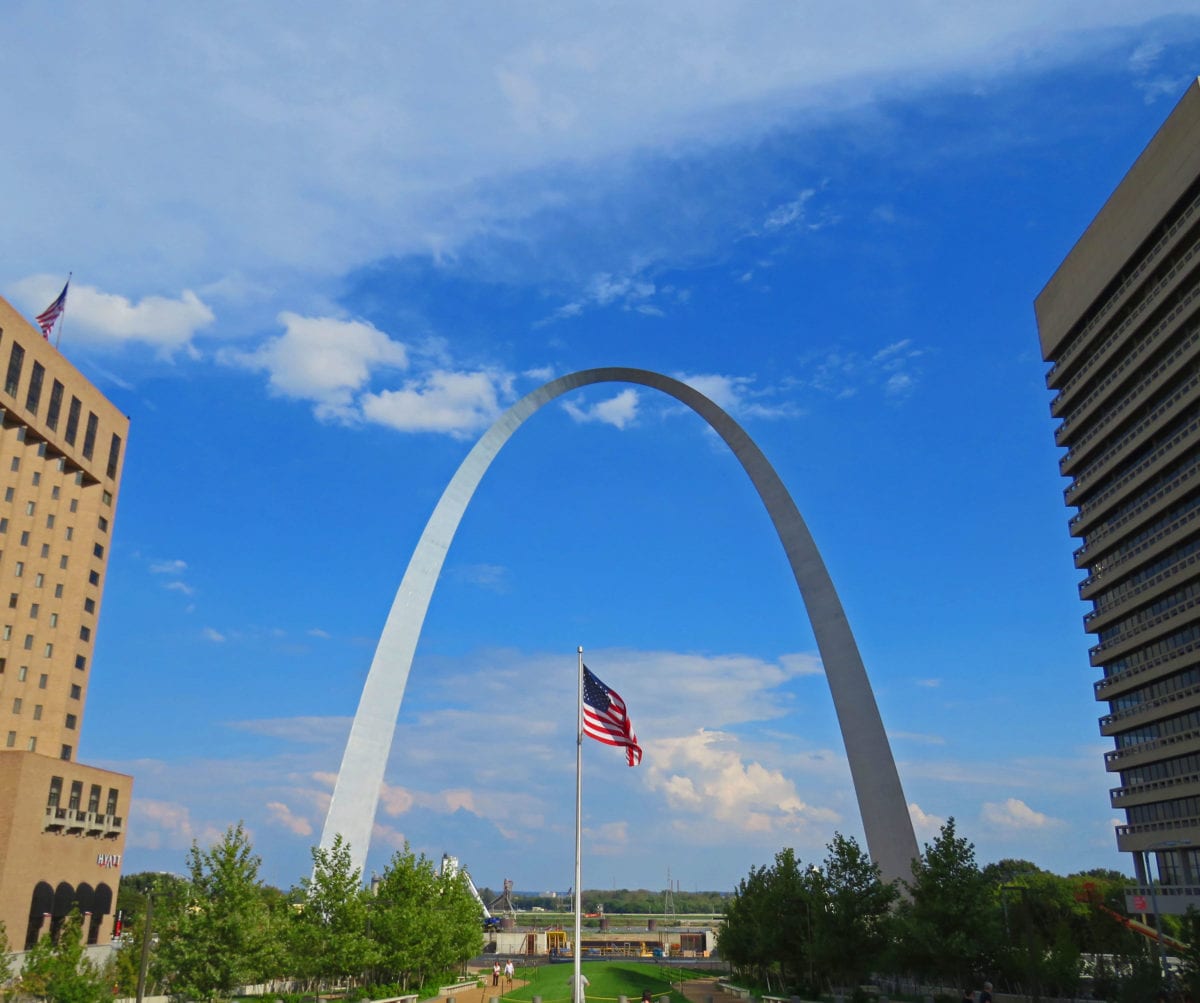
The Gateway Arch at the Jefferson Expansion Memorial in St. Louis, Missouri, where the Lewis and Clark expedition began: Glynn Wilson
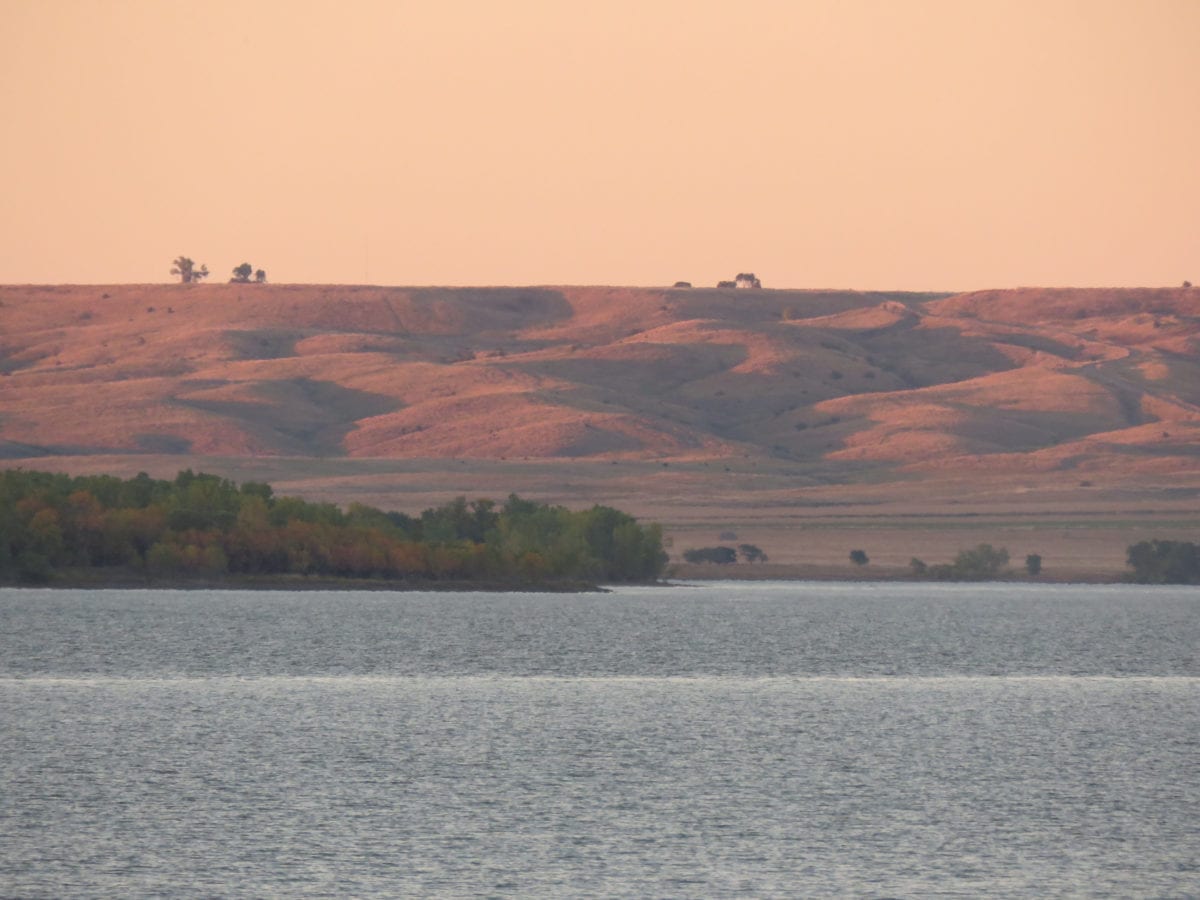
Sunset over the Missouri River from the American Creek Campground in Chamberlain, South Dakota: Walter Simon
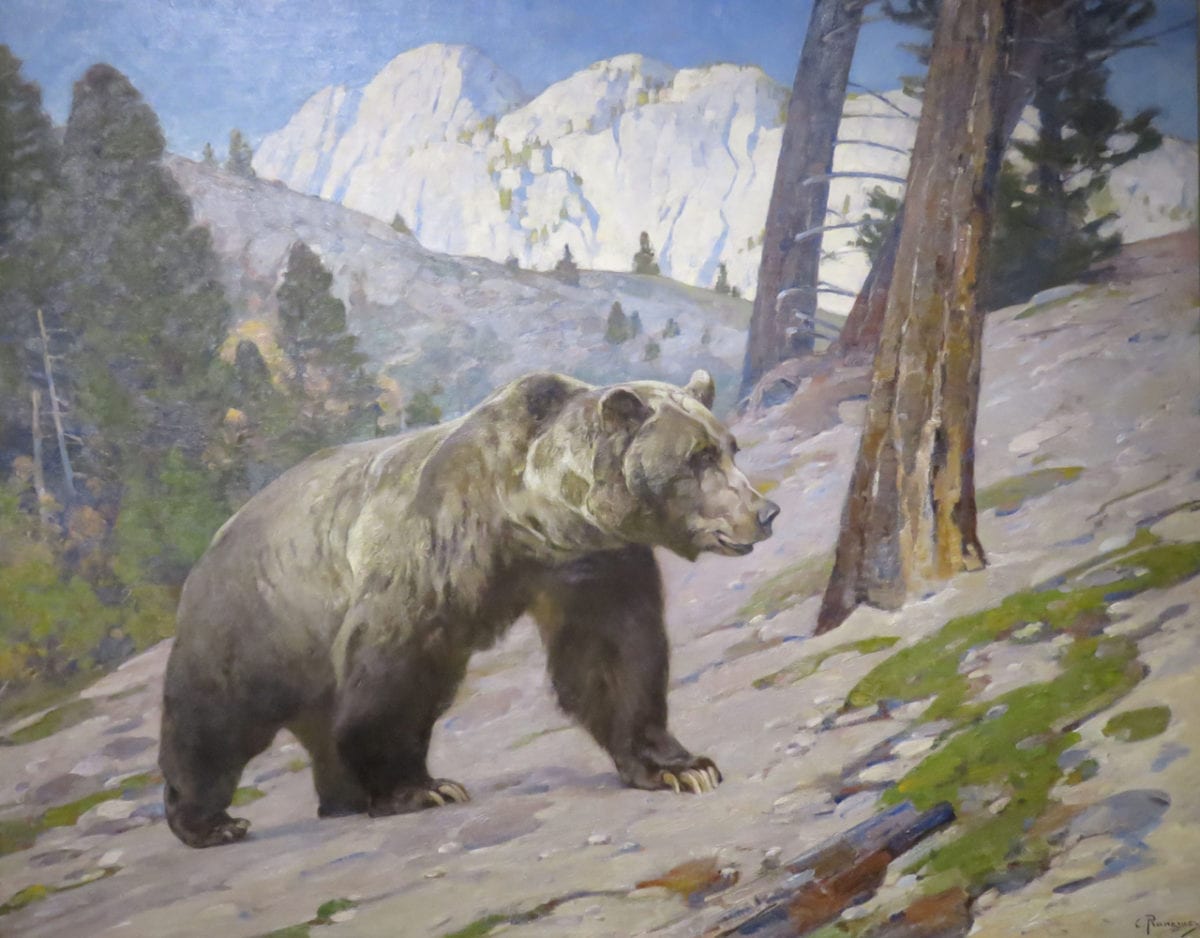
A painting of a grizzly bear with the mountains of Yellowstone National Park in the background: Glynn Wilson
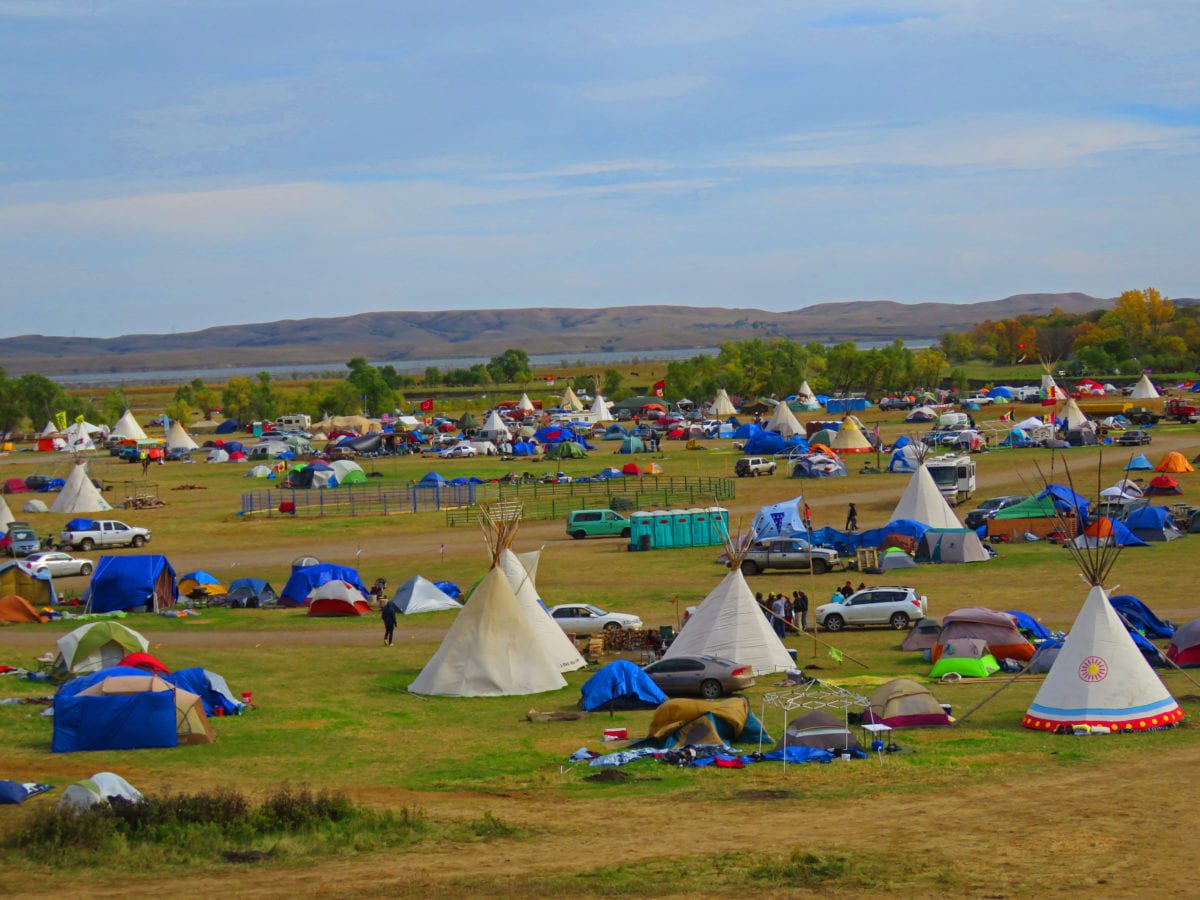
A wide angle view of the overlow Sacred Stone camp where the Cannon Ball and Missouri Rivers converge in Cannon Ball, N.D.: Glynn Wilson
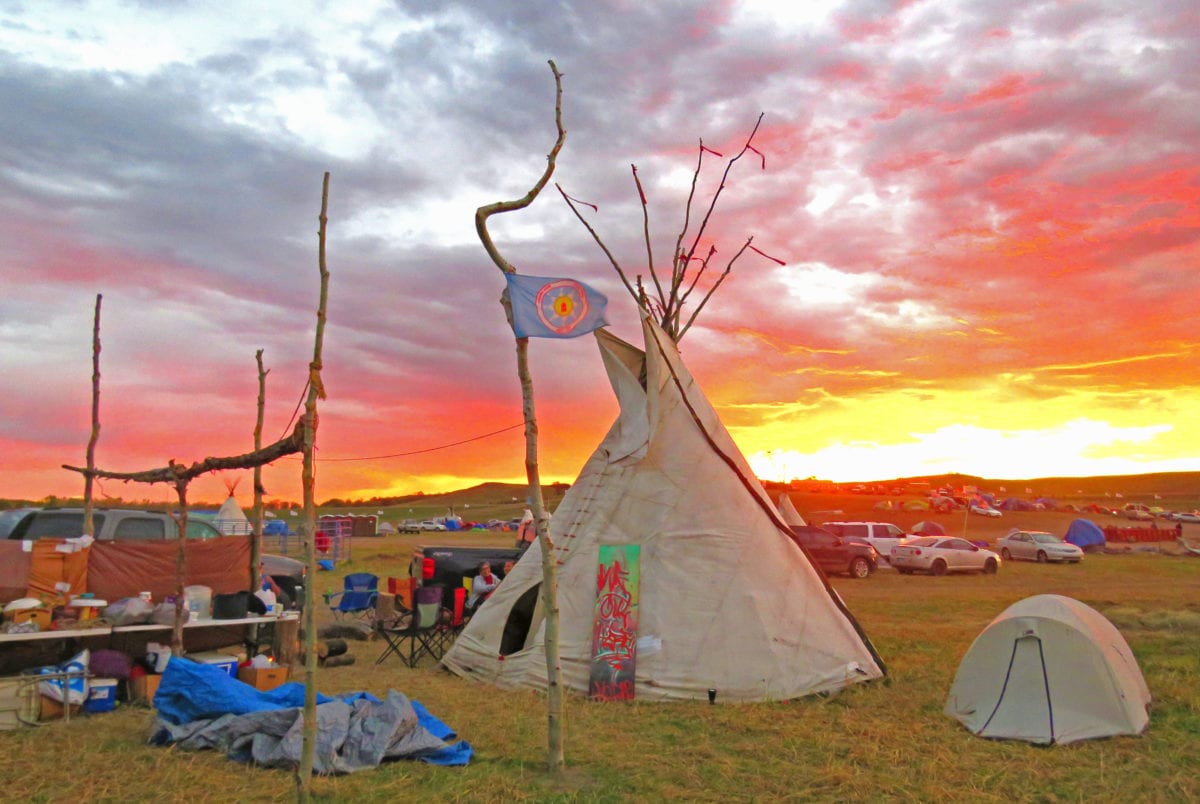
A traditional Sioux teepee at sunrise in the overflow Sacred Stone Camp at Cannon Ball, North Dakota: Walter Simon


